Table of Contents
Pain or cramping during menstruation is known as dysmenorrhea. A lot of women experience mild pain or cramps during their periods, but some may have severe pain that can interfere with normal daily activities. But the question is, why do females have cramps during periods? What are the medical conditions that cause period pain? This brief article answers these questions and identifies pain relief methods and red flags that indicate it’s time to see your doctor.
What causes period cramps (Dysmenorrhea)?
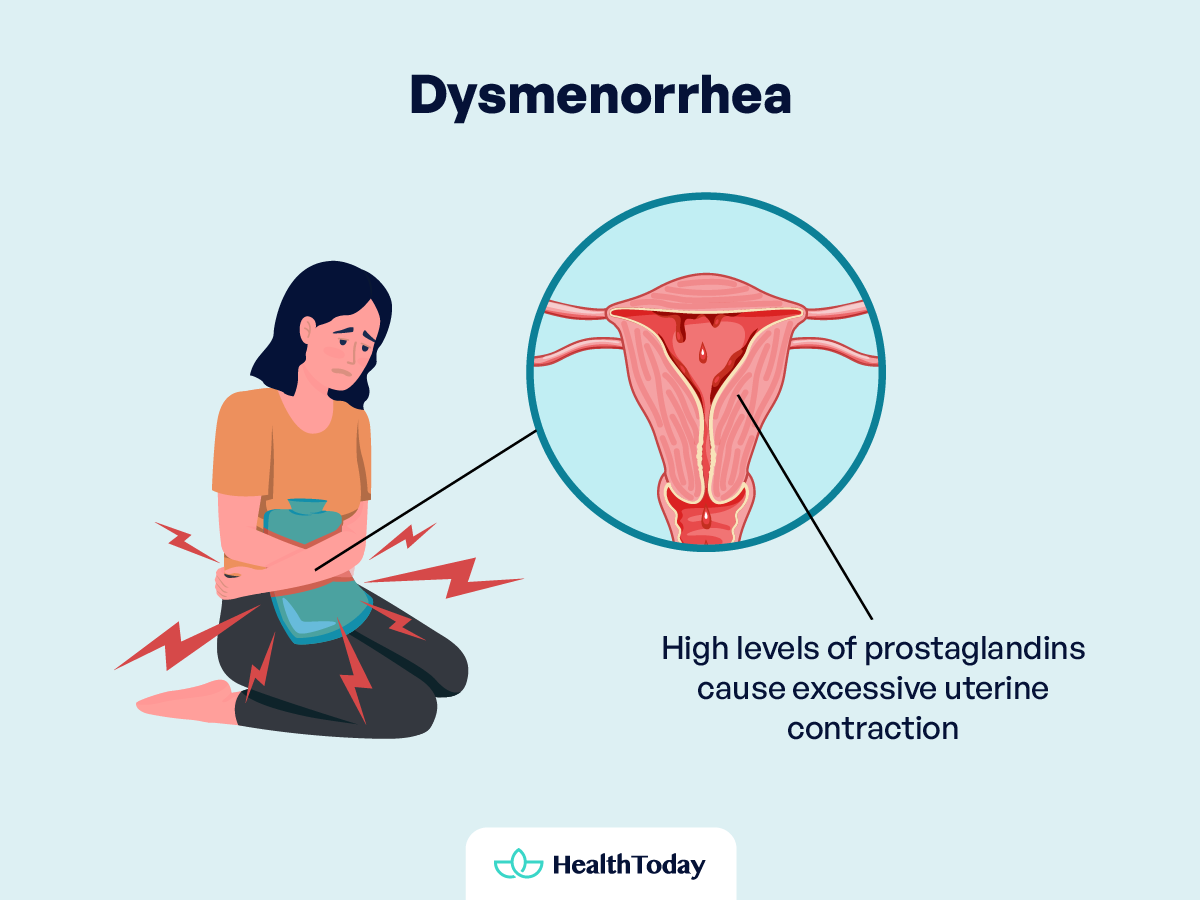
It is quite normal to feel discomfort, pain, or cramps right before and during the initial days of your period (1). During your period, your uterus contracts to expel the inner lining (2). Prostaglandins are the chemicals responsible for causing the uterus to contract. The crampy pain that most women experience at the start of their period is due to high levels of prostaglandins, which cause high levels of contractions (3).
Symptoms of period cramps:
The pain of menstruation is usually located in the lower abdomen (3). It is crampy and throbbing in nature. Some women also experience pain in the lower back that radiates to both legs (4). The chemical imbalance responsible for cramps also causes the following symptoms (4):
- Nausea
- Vomiting
- Diarrhea
- Headache
- Fatigue
- Lightheadedness
Stomach ache during periods:
Period pain can be felt throughout the abdomen but is more commonly felt in the lower abdomen (3). The most common associated gastrointestinal symptoms experienced during periods are nausea, diarrhea, and bloating (5).
The crampy pain felt during periods is due to a chemical imbalance during menstruation. Increased levels of prostaglandins cause uterine contractions and pain in the lower abdomen that radiates to the lower back and legs. Other associated symptoms are diarrhea, nausea, bloating, lightheadedness, and headache.
Why do my cramps hurt so bad?
The decrease in levels of some hormones results in the shedding of the inner lining of the uterus and the start of menstruation (6). At the start of menstruation, hormone-like chemicals, known as prostaglandins, increase. Prostaglandins are responsible for the contraction of the uterus and shedding of the inner lining of the uterus.
This contraction feels like a crampy pain in the abdomen. The severity of cramps is related to the amount of prostaglandins produced; prostaglandins are responsible for the increased pain and other symptoms of periods, such as nausea and diarrhea (6).
Conditions that may have painful menstrual cramps as a symptom
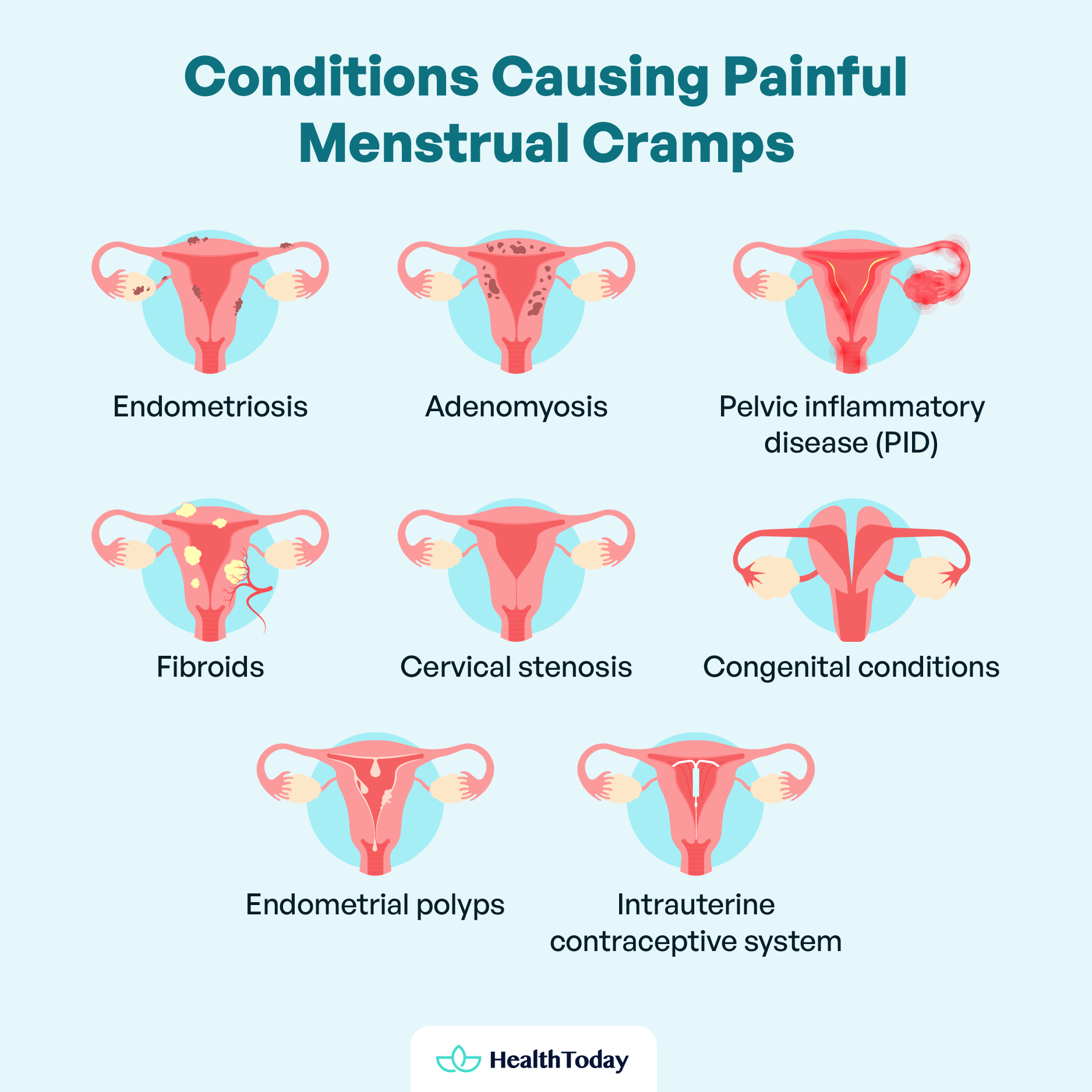
Feeling pain during your period is a normal phenomenon. This pain, often due to high levels of prostaglandins, is termed primary dysmenorrhea (7). It is defined as the pain that occurs during your period and is not due to any disease or medical condition.
Period pain can sometimes be caused by medical conditions. Any disease of the reproductive tract can cause painful periods (7). This pain is termed secondary dysmenorrhea. Secondary dysmenorrhea often occurs later in life and lasts for more days than primary dysmenorrhea.
The following are the conditions that can cause secondary dysmenorrhea (6, 7):
- Endometriosis: The most common cause of dysmenorrhea is discussed in detail below.
- Adenomyosis: The innermost lining of the uterus (endometrial tissue) grows in the second layer of the uterus (muscle layer), enlarging the uterus.
- Pelvic Inflammatory disease (PID): An infection of the reproductive tract.
- Fibroids: Benign tumors inside the wall of the uterus.
- Uterine cervical stenosis: The narrowing of the cervix (outlet of the uterus).
- Congenital conditions: Irregular shape of the uterus.
- Endometrial polyps: Overgrowth of endometrial tissue (the innermost lining of the uterus) inside the uterus.
- Intrauterine contraceptive system: Birth control device placed inside the uterus.

Endometriosis
Endometriosis is a common cause of painful menstruation (8). According to the World Health Organization, this condition affects almost 10% of women and girls worldwide.
Endometriosis is a condition in which endometrial tissue (the tissue that forms the inner lining of the uterus) grows outside the uterus (8).
The places where this endometrium can grow are (9):
- Ovaries
- Vagina
- Peritoneum (abdominal lining)
- The outer part of the uterus
- Urinary bladder
- Intestines
Endometriosis can cause pain so severe that it disrupts the daily activities of life (8). It also makes it difficult for a woman to become pregnant.
Endometriosis causes inflammatory reactions in the displaced endometrial tissue (9, 10). Over time, this inflammation can cause fibrosis (scarring) and adhesions. The adhesions (scar tissue) in the pelvis cause pelvic organs to stick together, aggravating the disease.
Endometriosis pain location
The most prominent feature of endometriosis is pain (9). The pain is located in the abdomen, pelvic area, and lower back, as these are the common areas where endometrial tissues grow.
Other associated symptoms of endometriosis are (8, 9):
- Pain while having intercourse
- Heavy menstrual bleeding
- Light spotting on days other than your period dates
- Severe abdominal or lower back pain
- Gastrointestinal upset (pain while defecating)
- Difficulty in becoming pregnant
- Pain while urinating
- Bloating or nausea
- Psychiatric symptoms such as depression or anxiety
Endometriosis diagnosis
Endometriosis can start when you first begin to get your period (menarche) and last until you no longer have periods (menopause) (8).
Usually, your symptoms will prompt you to visit your doctor (9). Your doctor will ask you questions about your periods, including the amount of bleeding, pattern of pain, and associated symptoms. After that, your doctor will examine your abdomen and pelvic region.
After a thorough examination, your doctor will order basic blood tests and radiological investigations, such as an ultrasound of the abdomen and pelvis (9). In some cases, you may have magnetic resonance imaging (MRI). Sometimes, doctors also recommend laparoscopy (a camera is inserted inside the abdomen) to take samples for biopsy and clearly visualize and possibly remove the lesions.
Treatment
Depending upon the symptoms, your age, the severity of your disease, and the wish to become pregnant, there are different treatment options available (8). But there is no single treatment that can completely cure the disease.
Over-the-counter painkillers, such as acetaminophen and NSAIDs (nonsteroidal anti-inflammatory drugs), such as ibuprofen, can reduce pain (8).
Hormone-containing pills also reduce the pain and manage the symptoms such as (8, 9):
- Birth control: hormones suppress endometriosis and heavy bleeding. They come in oral pills, intrauterine devices, vaginal rings, and patches. This hormonal suppression results in less pain and light bleeding. They are not suitable for someone attempting to become pregnant.
- Gonadotropin-releasing hormone (GnRH) medications: these medicines stop the hormones responsible for menstruation, thereby relieving pain.
- Danazol: This medicine helps in stopping periods and thus helps in reducing the pain associated with endometriosis
These medications manage the symptoms as long as you are taking them (9). Once you stop using them, symptoms do return. They are not suitable for you if you are trying to conceive (8). Fertility procedures are used to help women with endometriosis conceive (8).
Surgical procedures such as laparoscopic removal of lesions and breaking scar tissue can also ease the pain of endometriosis (9). In severe cases, your doctor may recommend you have surgery to remove your uterus and ovaries, particularly if you do not wish to become pregnant or if your disease is severe (9). Surgical procedures do not guarantee a positive outcome; they are associated with risks, too (9).
Endometriosis is a condition where endometrial tissue grows outside the uterus and causes painful, heavy periods. It also causes fertility problems. This condition is diagnosed with proper history, examination, hormone profile, ultrasound, and, in some cases, MRI. Treatment options include birth control pills, gonadotropin-releasing hormone medications, danazol, and laparoscopic surgery. Women who suffer from endometriosis and who wish to conceive may require fertility procedures and treatment.




Cervix pain during period
The cervix is a small passage between the uterus and the vagina (10). Menstrual blood flows through the cervix and out of the vagina.
Uterine cervical stenosis is a condition that causes the narrowing of the cervix (7). This narrowing makes it difficult for menstrual blood to come out, resulting in pain. The constriction of the cervix can occur congenitally, after damage (post procedures such as ablation), or due to certain conditions that cause tissues to stick together, such as endometriosis (11, 12).
The exact prevalence of uterine cervical stenosis is not available, but it is not common among women of reproductive age (13).
The treatment options for this condition vary depending on the degree of constriction (13). Treatments can include medications that dilate the cervix (misoprostol or mifepristone) or surgical procedures.
How to have a less painful period
If your periods are painful due to a medical condition (secondary dysmenorrhea), get treatment for the primary disease. Otherwise, you can try the following tips and medications for pain relief (1, 2, 7). Consult your doctor before starting any medication.
- Apply a hot compress on your abdomen or back, or take warm showers.
- Rest
- Avoid caffeine-containing products
- Stop smoking
- Exercise such as swimming or yoga. Intercourse may also help with pain.
- Take dietary supplements such as vitamin E, omega-3 fatty acids, and vitamins B1 and B6.
- Massaging your abdomen and lower back
- Avoid alcohol
- Reduce stress, as psychological factors increase the severity of pain.
- Take painkillers: Paracetamol/acetaminophen or nonsteroidal anti-inflammatory drugs (NSAIDs) such as ibuprofen.
- Take hormonal medications such as birth control pills. Your doctor may suggest pills, vaginal rings, or patches.
- Use a Transcutaneous electrical nerve stimulation (TENS) machine, which is a small electrical machine that delivers mild vibratory impulses to reduce pain.
When to see a doctor
Following are the red flags that should prompt you to visit your doctor on an urgent basis (1, 7) :
- Pain during intercourse or while urinating or passing stool
- Periods are so heavy that they cause lightheadedness
- Spotting in between menstrual cycles
- Pain so severe that it disrupts your daily life activities




Is stomach pain during monthly periods normal?
What causes lower right abdominal pain during periods?
Is it normal if I don’t have cramps during periods?
Pain or cramps during periods can be problematic. But don’t worry if you are not experiencing any pain; it is not essential to feel pain while menstruating. Painless periods are a sign of healthy periods (15).
What food makes period cramps worse?
Animal products, added oils, processed food, and a diet that lacks fiber can exacerbate menstrual cramps (16).
Can you feel your uterus contract during periods?
The contraction of the uterus produces crampy pain during periods (7). This contraction is caused by chemicals called prostaglandins. However, you do not feel the uterus contracting; instead, you feel pain or a crampy sensation.
Summary
During periods, your uterus contracts to expel the superficial layer of the innermost lining (endometrium). This contraction is sometimes enhanced by the increased levels of chemicals called prostaglandins in the body during menstruation. Most women feel crampy pain due to this contraction. Pain during periods is usually associated with nausea, bloating, vomiting, diarrhea, and headache.
Some medical conditions also cause painful periods. This kind of pain is termed secondary dysmenorrhea. Some of the diseases responsible for painful menstruation are endometriosis, adenomyosis, fibroids, uterine cervical stenosis, and PID. Endometriosis is a painful condition that results from endometrium growing outside the uterus. Hot compress, rest, stress reduction, avoiding smoking and alcohol, massage, and exercise can help reduce pain along with hormonal medications.






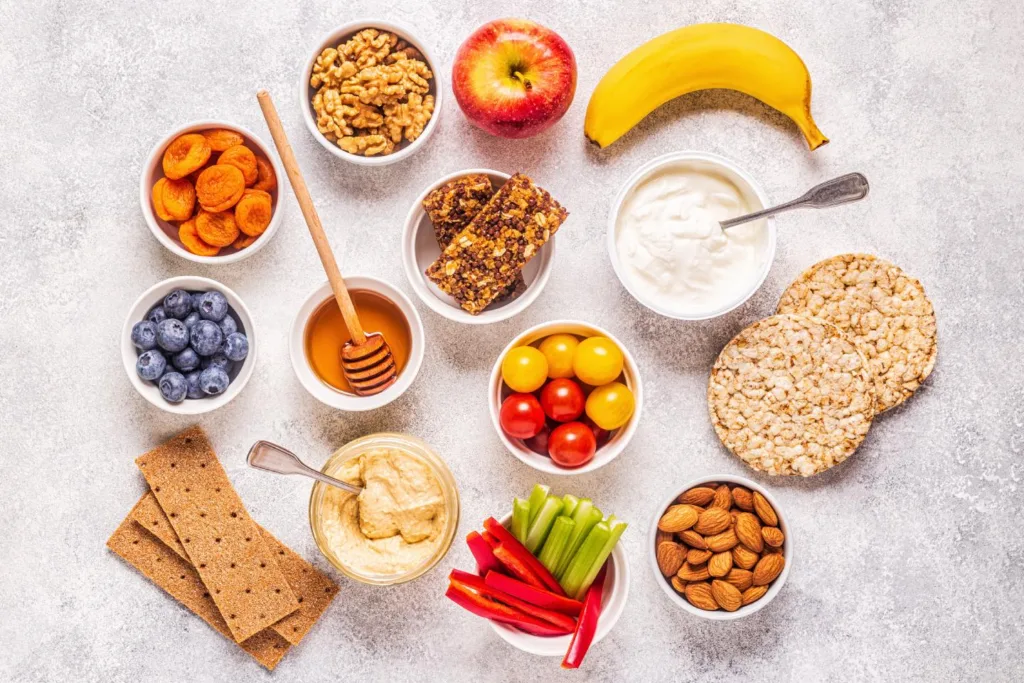

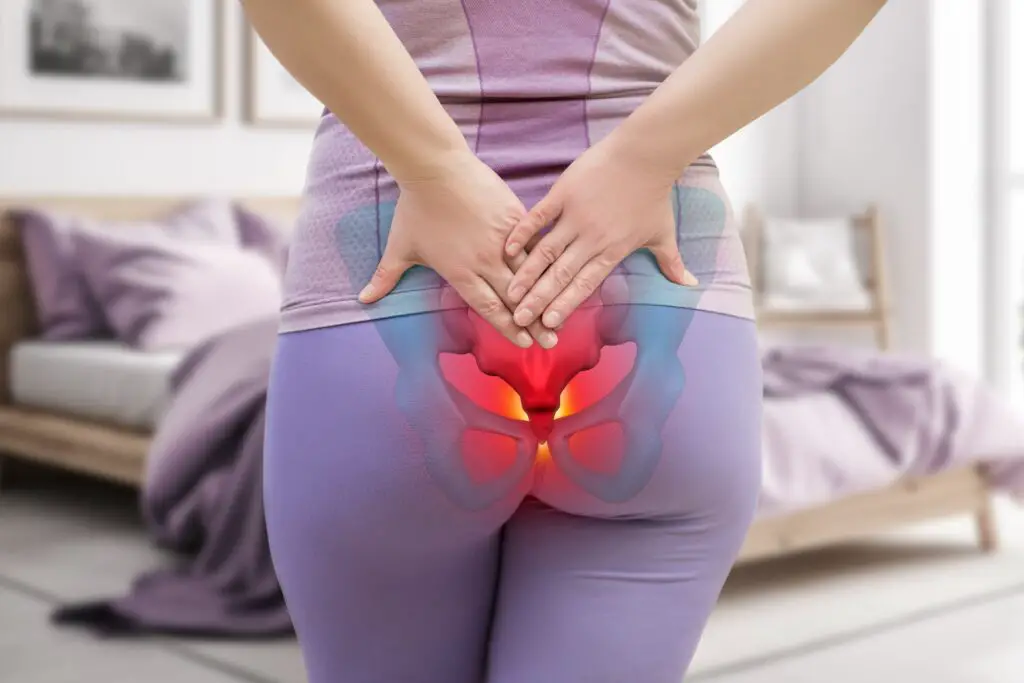


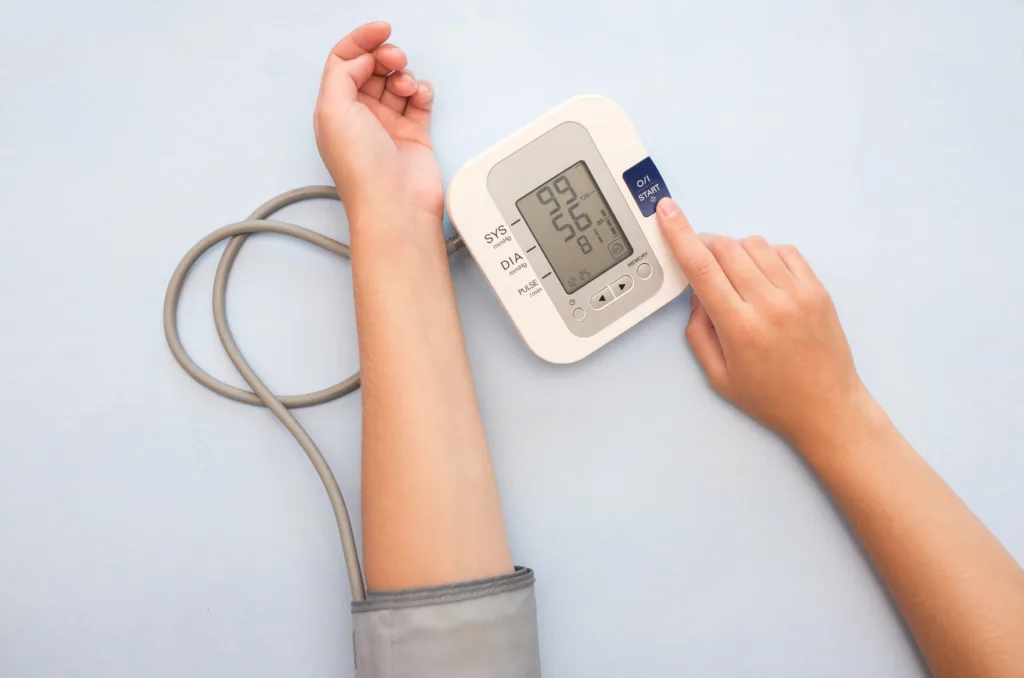
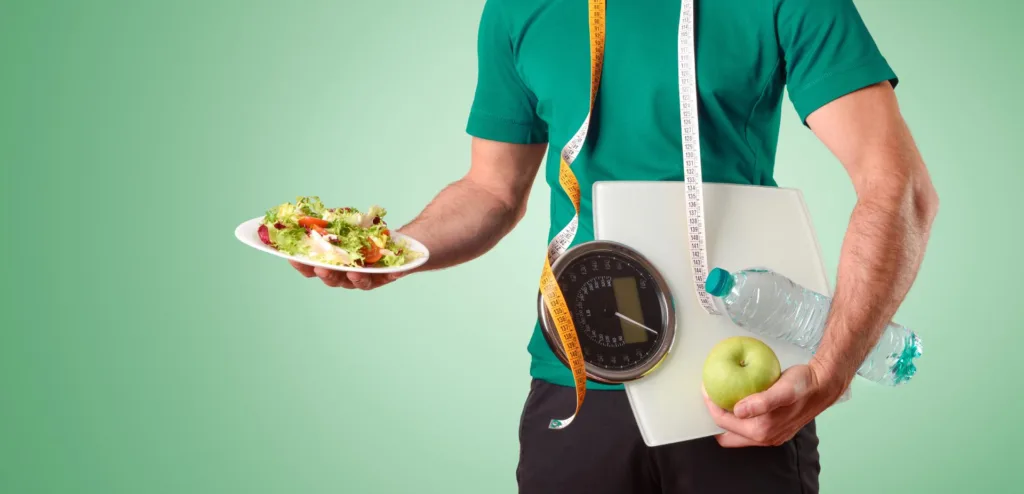
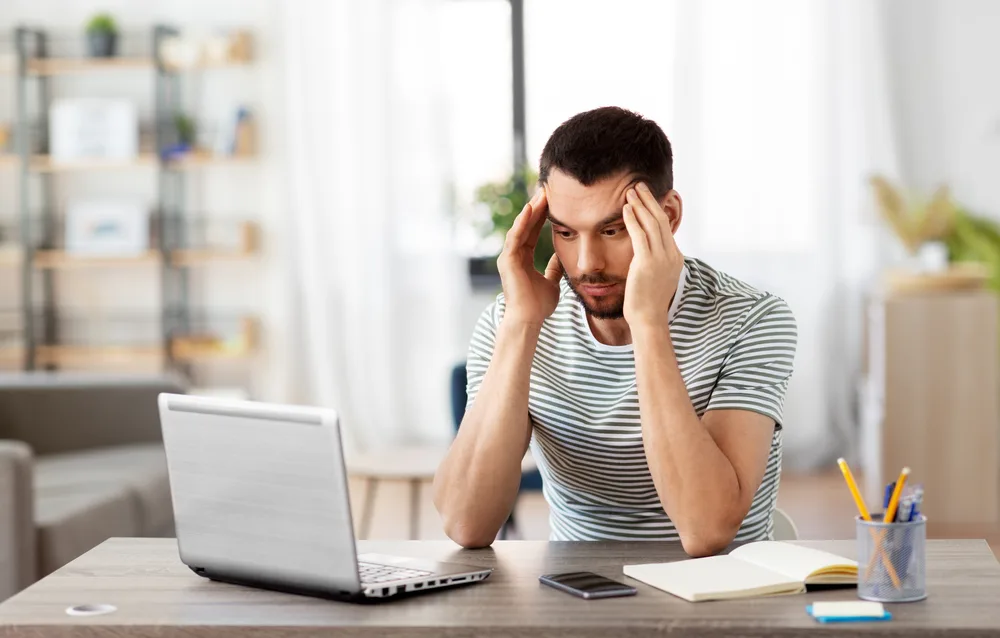


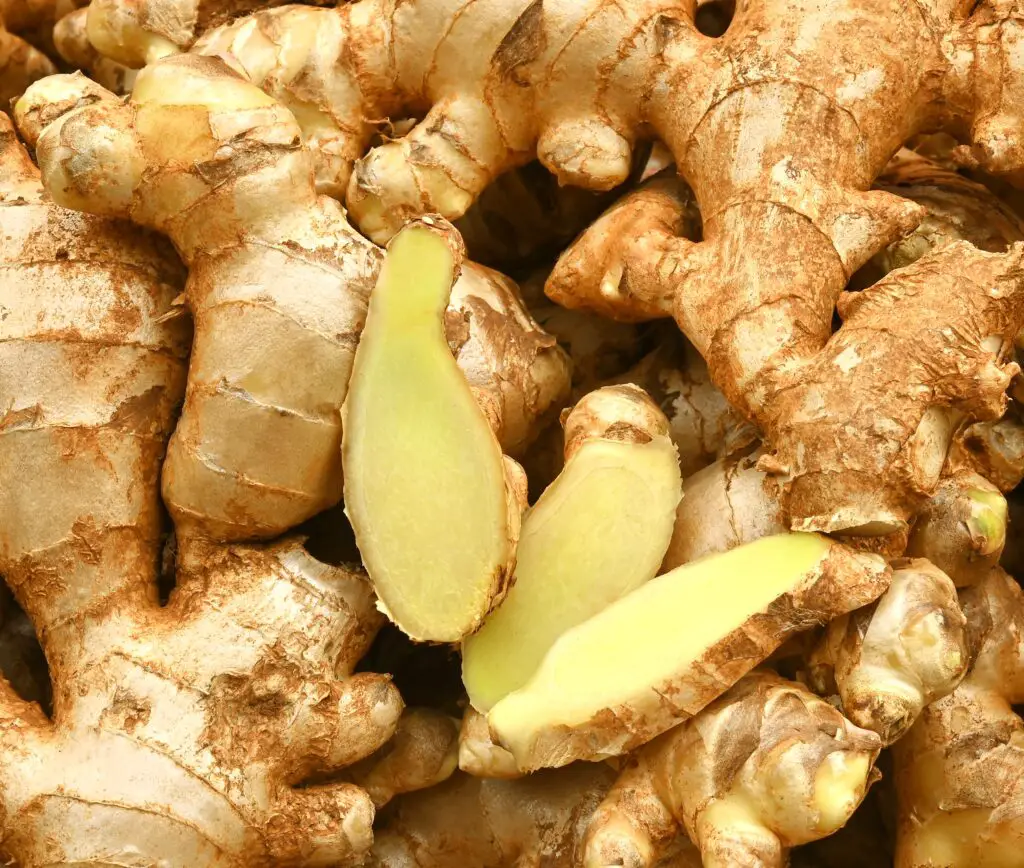
Comments
0